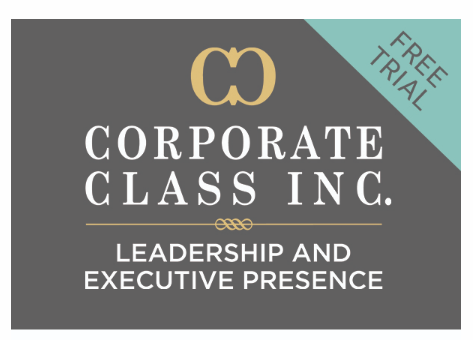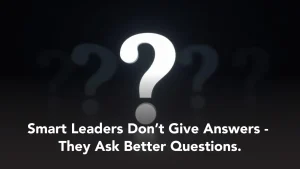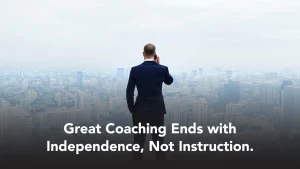What makes a great leader? Is it a certain x-factor, or could there be a definite list of core competencies that people can acquire and develop in order to become good leaders? While it is probably true that the greatest leaders do have a certain intangible charisma that is not easy to pick up if one does not have it, it is also undeniable that there are certain key skills and qualities that can be learned and developed to build yourself up as a leader. It may even be possible to compile a leadership checklist, complete with core competencies that individuals can acquire, either together or one at a time, to develop strong leadership skills and hone their executive presence.
Defining Effective Core Competencies for Leaders
While there are several different definitions of good leadership, each constituted with varying lists of qualities, it can be boiled down to three core competencies:
- Connection: Strong leadership is built on the ability to relate and connect to the people around you. Emotional intelligence and communication are essential. Great leaders can form close relationships with all and any stakeholders, from customers and team members to senior management. They know how to read the room, adjust their approach depending on who they are addressing, and make everyone they talk to feel seen and appreciated.
- Credibility: Team members and other stakeholders must have leaders whom they can regard as trustworthy and authoritative. They may not necessarily be experts in their field, but they are competent, know most of the answers, and know where to look for the answers they don’t have.
- Confidence: If credibility involves other people’s perception of a leader’s competence, confidence refers to that same leader’s belief in their own knowledge and abilities. Confidence is not arrogance. It is a simple, often humble, and quiet belief in one’s abilities in a certain field.
Required Leadership Communication Skills
Linked to the core competency of connection is the ability to communicate clearly, transparently, and concisely. Communication is actually quite a complex, multifaceted skill set that involves the following skills:
- Active listening and empathy: The skill of fully focusing on the speaker, understanding their perspective, and responding thoughtfully to ensure employees feel heard and valued.
- Clarity and directness: Communicating in a straightforward, purposeful way to help employees align with the team’s vision and achieve extraordinary results.
- Transparency and honesty: Being open and truthful in communication to build trust and demonstrate integrity, especially in a leadership role.
- Receptiveness and adaptability: Willingness to accept feedback and adjust communication styles to meet the needs of peers, team members, or stakeholders.
- Emotional intelligence: Recognizing, understanding, and managing emotions in communication, which is vital for today’s leaders to manage uncertainty and maintain focus.
- Awareness of body language: Understanding and controlling nonverbal signals to enhance communication and inspire confidence among contributors.
- Positivity: Communicating optimistically and encouragingly to foster high-performance teamwork.
- Conflict resolution skills: Navigating disagreements effectively to find mutually acceptable solutions and maintain team cohesion in today’s demanding environments.
Below are additional key elements to include in a leader’s checklist to help managers facilitate growth and high-performance teamwork:
- Visionary thinking: Crafting and communicating a clear long-term vision that aligns with the company’s mission and provides insight to engage teams toward shared goals.
- Delegation and empowerment: Assigning tasks effectively while modeling best practices, fostering accountability, and allowing employees to contribute their strengths.
- Resilience under pressure: Maintaining composure, acting like a confident leader, and adapting to challenges with emotionally intelligent decision-making to make a difference in high-stakes situations.
Inclusive Practices for Leading Diverse Teams
One thing that cannot be overlooked in successful leadership is the ability to be inclusive and to promote and develop diversity and equity. Therefore, a leadership checklist would have to contain practices and strategies for developing and promoting diversity and inclusion.
- A consciously inclusive leadership approach
- Regular DEI training
- Nurturing a culture of inclusion
- Developing the ability to identify and challenge unconscious biases
- Encouraging all team members to contribute, regardless of their backgrounds and abilities.
- Setting inclusivity and diversity goals
- Establishing a team dedicated to DEI
- Working with a DEI consultant to maximize all your inclusive practices
How to Evaluate and Improve Leadership Presence
If you are wondering how well you are doing in the area of leadership presence, ask yourself the following questions:
- How well do I communicate with my team? Do my team members understand me and is this apparent in our business outcomes?
- Am I confident? How would I rate my own abilities and knowledge?
- Am I skilled at being present and mindful?
- Do I have a strong network?
- Am I good at relating to others, reading situations, and responding appropriately?
- Do I lead by example?
It is not always easy to answer these questions honestly and authentically but start by giving your most truthful response to each question. Then, ask your team members to answer the same questions about you, so you can gauge their thoughts on your communication, confidence, mindfulness, networking, and emotional intelligence. It is probably advisable to get them to answer anonymously. You will be more likely to get honest answers that way.
Be open to the feedback you receive during this exercise. Don’t be too hard on yourself if you receive responses that don’t meet your expectations or are less than complimentary of your abilities. The next step is to be proactive about developing and improving those areas in which you have not performed so well. Signing up for some executive presence and leadership coaching is one of the best investments you can make as a leader.
Corporate Class is an expert provider of leadership development solutions. We can help you check the items on your leadership checklist and develop powerful, adaptive team members who can drive organizational change and growth. Our courses offer all you need for effective, transformative leadership development. Contact us for more information.





